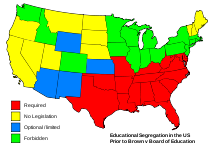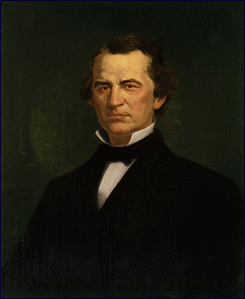There is only one thing to think about today and that is justice for Freddie Gray and the other victims of a militarized and out of control Police’s Racist War on Blacks, Hispanics, and the Poor.
A Baltimore Neighborhood, Wary and Healing, Prepares for Preakness Day
By JULIET MACUR, The New York Times
MAY 10, 2015
“They told me that there’s so many things we can do here that it would be really fun for me and my kids,” said Thomas, a 33-year-old single mother of four who works transporting patients at a hospital. “But I don’t know what to think of it. We’ll see. It’s been a tough couple of weeks.”
A tough couple of weeks for the entire city.
Less than a month ago, Freddie Gray, a 25-year-old black man, was arrested in the Sandtown-Winchester neighborhood, about four miles southeast of Pimlico, which sits on the northwest side of the city. Gray fell into a coma while in police custody and later died. Riots and protests followed, including some outside Camden Yards, where in the jittery days after Gray’s death two Orioles games were postponed and another was played behind closed doors.
Six police officers have been charged in connection with Gray’s death, and some residents here predicted that those indictments might quell any protests, at least until the trial. But for now, the wounds in the city and in this neighborhood, where the 140th Preakness will be run on Saturday, are still raw. As race day approaches, many people here remain on edge.
Sometimes sporting events can play a role in healing a city’s wounds, as the baseball games after the attacks of Sept. 11, 2001, did in New York City. But the Preakness doesn’t quite fit that role.
A gigantic banner hanging above the racetrack’s main entrance declares the Preakness to be “the people’s race” and “the people’s party.” But those people, for the most part, aren’t from the largely black community around the track, where just gaining admission to the clubhouse and the grandstand will cost you $25 (much more if you want a seat), and where an infield ticket will set you back $70.
“For 50 years, I’ve sat on this porch and have seen people come and go on Preakness day, and most of them are white and rich and look all fancy in their dresses, neckties and shorty-shorts,” said Ruth Spencer, 87, who lives near the corner of Hayward and Winner Avenues, across the street from the track. “But I do love watching the people come by. I feel proud that they’ve come here to my backyard.”
…
But on race weekend, Austin said, the neighborhood was energized by the party atmosphere and the chance to make a bit of quick money. Asked if that fun might be ruined this year by protesters looking to grab the spotlight, Austin laughed.
“Oh, no, no,” he said. “Do you know how many police there are here that weekend? There’s one every few feet. Nothing’s going to happen here. Not a thing.”
Austin said that the greatest tension between the residents and the police in recent years had stemmed from a rule that bars the sale of anything on the racetrack side of the street.
The rule was announced a few years ago when signs appeared that read: “No vending. By order of the Baltimore City Police Department.” Residents trying to make a buck on Preakness weekend are still grumbling about that, noting that the police certainly have bigger problems to worry about than octogenarians selling iced tea for a dollar.
…
But Zora said that Gray’s death had changed the way she viewed the police. When she sees a police car drive by now, she said, she can feel her heart beating faster.
“Now when I see them, I start thinking, What if they want to fight one of us? What if they want to fight me? And that scares me,” she said, while sitting on a swing at the Pimlico Good Neighbor Park, which on Thursday was so strewn with cups, candy wrappers and potato chip bags that it looked as if a trash bag had exploded.
Thomas said that Zora’s distrust of the police made her sad. And even Baltimore’s mayor, Stephanie Rawlings-Blake, admitted on Wednesday that the police and the community had a “fractured relationship.”
That was why the mayor asked the Justice Department to investigate any unconstitutional abuse or discrimination on the part of the Police Department. That federal investigation is now underway, but in Park Heights and Sandtown-Winchester and many other neighborhoods, a tense truce between the black community and the police will remain the order of the day for a while.
To make the best of the situation, even if it is a short-lived distraction, Thomas said she was considering her neighbor’s suggestions for race day.
“I have a hot dog machine, and a popcorn maker, so I might take them out to see if I can sell some, or maybe make fresh lemonade,” she said with a sigh as her 8-month-old daughter wailed in the background. “Or, I don’t know, maybe not.
“With all that’s happened here in our city, I have really mixed feelings. A lot of people do.”
Yeah, celebrate good times and forget about all the ugliness and oppression, c’mon. Rights? You have no rights a Gold or their jackbooted Sturmtruppen, the Blues and the Greens, are bound to respect. Vive la Ancien Régime.
Even the Derby winner, American Pharoah, has a name that reeks of oligarchic privilege and wears earplugs to dampen the noise of the unwashed masses.
American Pharoah Is a Fan Favorite, but Not Vice Versa
By MELISSA HOPPERT, The New York Times
MAY 15, 2015
During the walkover at the Derby, a tradition that allows contenders’ connections to escort them on the racetrack to the paddock, American Pharoah became so unnerved by the crowd of people around him and the record 170,513 in the stands that it took several grooms to control the dark bay colt.
“The walkover for the Derby has gotten out of control,” said Baffert, who even stuffs fluffy cotton plugs in American Pharoah’s ears before every race to avoid such occurrences. “There’s too many people. It was like walking your horse through Times Square at midnight on New Year’s Eve. And they were yelling and screaming and running next to him and taking pictures, so it got him a little stirred up.”
His aggressive behavior, noted by horseplayers as a bad omen because it saps strength, continued in the paddock and on the racetrack, until he was loaded into the starting gate.
“He started becoming very hyped, and he was using a lot of energy, and I got very nervous because that’s the first time I’ve seen him do that,” his owner, Ahmed Zayat, said.
From the URL- Favorite’s Problem? He hates crowds but packs them in. There is truth in that.
Oh, you want to talk about horse races, not class conciousness. Well, there are only 8 horses in today’s race because if you don’t have a Triple Crown contender, what’s the point? People care more about dogs than they do about horses, and your ever shrinking audience is 1%er’s, gamblers, and the celebrity obsessed. Still, no one ever went broke underestimating the taste of the people.
American Pharoah will not win despite the hype. His stablemate Dortmund is much more stable in temperment, was faster through the length of the shorter Pimlico course, and starts from a more favorable pole position. American Pharoah begins on the rail and will be buried by an avalanche of horses headed for the racing line.
According to The New York Times the field looks like this-
| Gate |
Name |
Jockey |
Odds |
|
|
|
|
|
|
|
|
| 1 |
American Pharoah |
Victor Espinoza |
4-5 |
| 2 |
Dortmund |
Martin Garcia |
7-2 |
| 3 |
Mr. Z |
Corey Nakatani |
20-1 |
| 4 |
Danzig Moon |
Julien Leparoux |
15-1 |
| 5 |
Tale of Verve |
Joel Rosario |
30-1 |
| 6 |
Bodhisattva |
Trevor McCarthy |
20-1 |
| 7 |
Divining Rod |
Javier Castellano |
12-1 |
| 8 |
Firing Line |
Gary Stevens |
4-1 |
Joe Drape’s picks: Firing Line, Dortmund, American Pharoah
Melissa Hoppert’s picks: Dortmund, American Pharoah, Firing Line
Pimlico.
Preakness Trivia
- Actually 2 years older than the Kentucky Derby.
- Shortest in distance (1/16th shorter than the Derby).
- Only the Derby has a larger attendance.
- No Black Eyed Susan has ever been used, currently it’s painted Chysthanthemums.
There have been 34 winners of both the Kentucky Derby and Preakness Stakes including the 11 Triple Crown winners.
Preakness Traditions
Winners don’t get the real Woodlawn Cup to keep, but a half size replica (oh, and the Woodlawn Racing Club is defunct). Black Eyed Susans don’t bloom until 2 months after the Preakness. The Old Clubhouse was destroyed in a fire in 1966. They paint the winner’s racing silks on the weathervane. No one on the internet knows why it’s called the Alibi Breakfast.
Official Website
I need a drink-
Black Eyed Susan Recipe
(Official, but without the brand names)
Ingredients:
- 1 1/4 oz. Bourbon (20% of Early Times is aged in used barrels)
- 3/4 oz. Vodka
- 3 oz. Sweet and Sour Mix
- 2 oz. Orange Juice
Preparation:
Fill a highball glass with shaved ice, add the liquors first, then top off with orange juice and sweet and sour mix. Stir and garnish with an orange slice, cherry, and stirrer. |
Post time 6:18 pm ET, coverage starts at 4:30 pm on NBC.



 I’m extremely happy that I’ve finally dismissed
I’m extremely happy that I’ve finally dismissed 
 Welcome to the
Welcome to the 